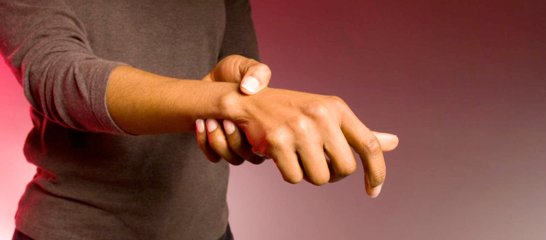





Treatment


Questions to Ask
Self-Care / Prevention
-
•Follow your doctor’s advice on exercise.
-
•Take OTC and prescribed medicines as your doctor advises. Ask about supplements, such as glucosamine and flaxseed oil. Discuss products that promise to “cure” arthritis with your doctor. Do this before you try any of them.
-
•Follow a healthy diet. Lose weight if you are overweight. Do not fast, though. This can raise uric acid levels and increase the risk for gout.
-
•Don’t do activities that put too much stress on your joints. Take regular breaks. Protect the joints from injury. Wear knee pads, etc.
To Prevent Osteoarthritis
-
•Get to and stay at a healthy weight.
-
•Get regular exercise. (See Be Physically Active.) Don’t overdo it, though. If you feel pain, stop.
-
•Prevent falls and sports injuries.
Common Health Problems » Muscle & Bone Problems

Treatment depends on the type and how severe it is. In general, treatment includes:
-
•An exercise program, as needed. Exercises done in water are very helpful and soothing.
-
•Medicines to help relieve pain and reduce swelling. For gout, medicine to lower blood uric acid.
-
•Healthy diet. Weight loss, if overweight.
-
•Physical therapy.
-
•Surgery. When needed, damaged joints can be repaired or replaced with artificial ones.
Arthritis refers to over 100 disorders of the joints. The chart below gives information on common types of arthritis.
Resources






Do you have black, tarry stools, and/or stomach pain after taking medicines for arthritis?





Is the skin over a joint red and shiny or do you have these problems?
-
•Increased pain, redness, and/or swelling of one or more joints.
-
•Fever and you feel sick.


In a child with joint pain or swelling, do any of these problems occur?
-
•Pain and swelling about 2 inches below the knee cap.
-
•The child limps from pain in a knee or hip or the child cannot run or use an arm or hand.


Are signs and symptoms of any type of arthritis present?

Do joint pain and stiffness prevent normal activities? Or, do symptoms not improve with prescribed treatment?

Type of Arthritis
Signs & Symptoms
Causes & Risk Factors




Osteoarthritis. This is the most common type.

-
•Joint pain and stiffness in the hands, knees, ankles, etc.
-
•Finger joints with knobby growths.
-
•Swollen joints (sometimes).
-
•Wear and tear on joints.
-
•Injuries and overuse of joint(s).
-
•Being overweight.
-
•Family history of the disease.

Rheumatoid Arthritis (RA). This is the most disabling type. Besides the joints, RA can affect the lungs, eyes, spleen, skin, and heart.
-
•Morning stiffness that lasts longer than an hour.
-
•Swelling in 3 or more joints.
-
•Swelling of the same joints on both sides of the body, such as both knees or both wrists.
-
•Joint tenderness, warmth, or redness.
The exact cause is not known. It may be due to a fault in the immune system that causes the body to attack its own cells. Risk factors include:
-
•Chronic swelling of the membranes that line the joints.
-
•Family history of the disease.

Gout. This is most common in men over age 30. In women, it usually occurs after menopause.
-
•Sudden, intense pain in a joint, often in the big toe.
-
•Swollen joint.
-
•The joint area is red or purple in color, feels warm, and is tender to the touch.
An attack can last hours to days.
Gout occurs when crystals from high blood levels of a body waste product (uric acid) form in the joints. The body’s immune system treats these crystals like a foreign substance.

Ankylosing Spondylitis. This type most often affects young men between the ages of 15 and 45.
-
•Stiff backbone.
-
•Low back pain.
-
•Stiff, bent posture.
-
•Breathing problems.
-
•Swelling of the iris of the eye.
-
•Family history of the disease.
-
•In some cases, it has been linked with inflammatory bowel disease.
-
•Joints in the spine start growing together.


HealthyLearn®
www.HealthyLearn.com. Click on MedlinePlus®.


2012 © All Rights Reserved - American Institute for Preventive Medicine | Disclaimer | Phone: 800.345.2476 | www.HealthyLife.com


